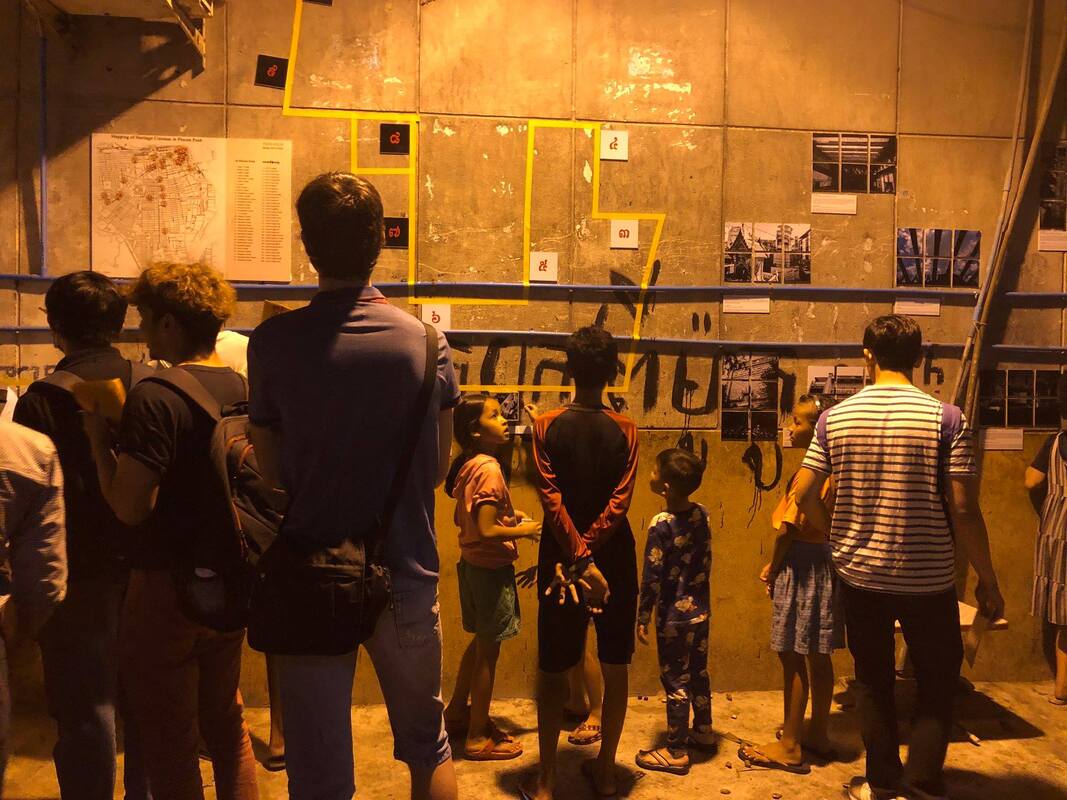20 Mar 2019, 6:00-8:00pm
Venue: Alley lane of former Kim Son cinema, St 144 (between St 19 & St 15)
Map: https://goo.gl/9HUnso
Exhibition runs through 27 Mar
Venue: Alley lane of former Kim Son cinema, St 144 (between St 19 & St 15)
Map: https://goo.gl/9HUnso
Exhibition runs through 27 Mar
|
“Fade Out”
by Roungkon Project Fade Out is an architectural exhibition about a gradually disappearing heritage of cinemas in Cambodia which they used to be an important part of education, entertainment and urban life style. In the 1960s, most of the cinemas were popular because of quality, good film production, and their modern architectural style in the period. Cinemas were regarded as a notable gathering center for meeting, connecting, relaxing, learning and cultural exchanging, even their names are also used as a landmark of the region until today. However, those cinema buildings are increasingly facing disappearance one by one, due to the fast development, new trend of modernity, new urban life style, remarkable urbanisation, and the lack of understanding on the value of architectural preservation which have changed their function as well as their façade and main structure to serve varied purposes. Fade Out highlights the current vulnerable situations of old cinemas, while some of them have been completely destroyed and some have been badly renovated. These situations will continue to happen steadily until they are gone if there is no immediate, effective action taken to preserve and acknowledge them.
|
About Roung Kon Project
Roung Kon Project was found in 2016 by a group of architects and architecture students. It is a multi-disciplinary project that aims to promote and document the 1960s cinemas in Cambodia. The documentation includes many forms such as architectural drawings, interviews (with filmmakers, scholars and ordinary people), photographs, films, written documents and maps. The project highlights the aspect of urban form of the cities through cinemas on how it reflects the ideology of Sangkum Reastr Niyum era’s city planning based on cultural engagement. All the materials will be accessible for free online for researchers, students, artists, architects and urbanists.
|
“Chicken Digs Rubbish - In Search of Praxis”
by Project Little Dream and AA School Thnout Village School is a critical rethinking of an enclosure. Located on an open rice-field with little covering vegetation, the school is composed of different classrooms, library and workshops to be organised around a centripetal courtyard.This emptiness offers a space for students to invent, to play and to imagine. By interrogating the typology of schools, the project is a continuous architectural experiment that redefines learning environments in a rural context in Takeo Province. In 2018, we collaborated with the Architectural Association in London and welcomed architecture students from around the world come to build installations and extensions around the campus. Looking forward to 2019, we will provide for the growing need of vocational training for young adults in the village by introducing a workshop space. Additionally, we will be re-building one of the Vann Molyvann’s 100 houses, a modern stilt house translated using contemporary building technology. These new extensions will be held in collaboration with Vann
Molyvann Project in promoting Khmer architectural knowledge to a wider audience. |
About Project Little Dream
Project Little Dream (PLD) is a registered charity in Hong Kong that designs, builds and runs primary schools in Cambodia since 2009. The project began with the little dream of 15 Hong Kong students who saw the need to learning spaces in the villages of Takeo and we decided to build one. This is a project about dreaming of spaces and realising them. Project Little Dream aims to further education quality by designing, building and running village schools in underprivileged areas of Takeo, Cambodia. Through creating a safe and encouraging school environment,PLD promotes literacy and knowledge in public health and architecture. We honour culture, language and aesthetics. We hope we inspire all those we meet, on the ground or abroad, to share our appreciation.



